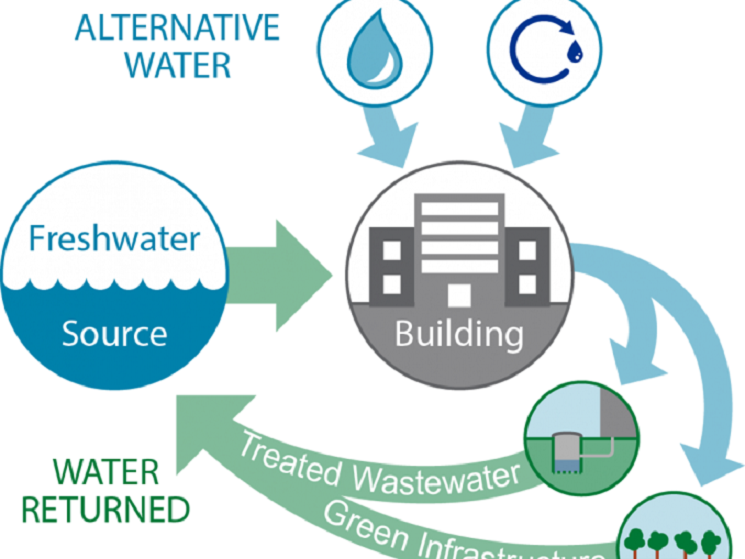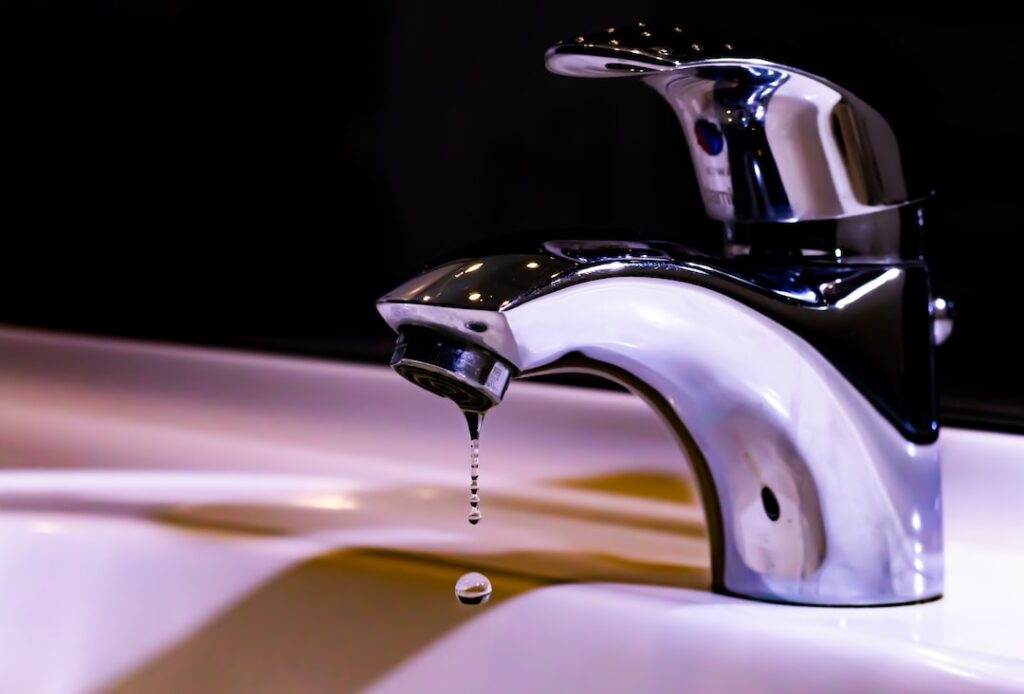In an effort to protect our planet’s limited resources, knowing how to improve water efficiency in buildings is a must. By taking steps to reduce the amount of water consumed in construction and operations, we can help conserve this vital resource while also saving money on utility bills.
In this blog post, we’ll explore how to improve water efficiency in buildings of all sizes. We’ll also discuss best practices for reducing consumption, regulations that may apply depending on location, and potential challenges in implementation.
Table of Contents
Benefits of Improving Water Efficiency in Buildings
The number one benefit of improving water efficiency in buildings is saving money. By installing low-flow toilets and showerheads or implementing water reuse systems, building owners can reduce their monthly water bills significantly.
Additionally, many local governments offer tax incentives and rebates for businesses that invest in water-saving technologies.
Prudent water consumption also has a major impact on the environment. By using less potable water for non-potable uses like irrigation or cooling towers, we are able to conserve our natural resources.
Improving the efficiency of a building’s plumbing system also reduces the risk of flooding due to pipe breaks or clogs, which can cause property damage as well as potential health hazards from mold growth caused by standing water.
Efficient plumbing systems help ensure that all occupants have access to clean water for washing hands and other hygiene needs, which is especially important during times when public health is at risk due to disease outbreaks like COVID-19.
How to Improve Water Efficiency in Buildings
One of the most effective strategies for improving water efficiency in buildings is to install low-flow fixtures. Low-flow fixtures such as toilets and showerheads are designed to use less water than traditional models while still providing an adequate level of performance. This can result in significant savings on a building’s monthly water bill.
Additionally, many local governments offer incentives for installing low-flow fixtures, making them even more cost-effective.
Another strategy for improving water efficiency in buildings is to implement a water reuse system. These systems capture rainwater or wastewater from sinks and showers and then filter it so that it can be reused for non-drinking purposes such as irrigation or toilet flushing. This reduces the amount of water needed by the building and helps conserve resources.
Finally, monitoring and tracking usage is another important strategy for improving water efficiency in buildings. By keeping track of how much water is being used each month, building owners can identify areas where improvements need to be made or where additional conservation measures should be implemented.
Tracking also allows owners to compare their current consumption levels with past months so they can evaluate if water-saving measures are making an impact.

(Source)
Best Practices for Reducing Water Consumption in Buildings
Educating building occupants on water conservation techniques is an important step in reducing water consumption. This can include providing information about how to conserve water and teaching people about the importance of using low-flow fixtures and other efficient appliances.
Property managers should also encourage tenants to report any leaking pipes or faucets right away so they can fix the problem before it escalates.
Performing regular maintenance on plumbing systems is another best practice in water conservation. Check for leaks, inspect pipes for corrosion or blockages, replace worn-out parts, and clean filters regularly. Regular maintenance will help reduce water waste by preventing leaks from occurring in the first place and catching them quickly if they do occur.
Smart technology can help reduce water consumption in buildings significantly by monitoring usage levels and adjusting settings based on occupancy levels or weather conditions outside.
For example, installing a smart irrigation system with sensors that detect moisture levels in soil can help ensure that plants are only watered when necessary while avoiding overwatering.
Additionally, automated leak detection systems help identify potential issues before they become major problems.
By implementing the best practices for reducing water consumption in buildings, businesses can begin to improve their overall water efficiency.
Regulations for Improving Water Efficiency in Buildings
How are governments doing their part in water conservation?
Local, State, and Federal Laws
Governments around the world have implemented laws to encourage water efficiency in buildings. These laws vary by jurisdiction but typically include requirements for low-flow fixtures and other water conservation measures.
In the United States, federal law requires all new construction projects to meet certain standards of water efficiency.
Many states have also enacted their own regulations that are more stringent than federal law. For example, California has a series of regulations known as Title 24 which require all new construction projects to exceed minimum standards for energy and water efficiency.
LEED Certification Requirements
The Leadership in Energy and Environmental Design (LEED) certification is an internationally recognized standard for green building design and performance. To achieve LEED certification, buildings must meet specific criteria related to energy use, indoor air quality, resource management, and more – including efficient use of water resources.
Projects can earn points towards LEED certification by installing low-flow fixtures or implementing other strategies that reduce the overall consumption of potable water.
Tax Incentives
Many governments offer tax incentives or rebates to businesses that invest in rainwater harvesting systems or greywater reuse systems. Some states offer tax credits for investments made in high-efficiency toilets or showerheads.
Local utility companies may also provide rebates on products like smart irrigation controllers which help conserve large amounts of potable water used outdoors.
FAQs in Relation to How to Improve Water Efficiency in Buildings
What is one of the most effective ways to reduce indoor water consumption in commercial buildings?
One of the most effective ways to reduce indoor water consumption in commercial buildings is by installing low-flow fixtures and appliances. Low-flow fixtures such as toilets, showerheads, and faucets use significantly less water than traditional models.
Appliances like dishwashers and washing machines can also be replaced with more efficient models that consume less water.
How do green buildings become water efficient?
According to the US Green Building Council (USGBC), the core concepts of water efficiency are:
- Bring down water usage for indoor use through better technologies.
- Lesser water consumption reduces the demand for energy.
- Adopt an eco-friendly approach by avoiding wasting natural resources.
Conclusion
Improving water efficiency in buildings is an important step toward reducing water consumption and protecting our environment. By implementing strategies such as installing low-flow fixtures, using rainwater harvesting systems, and adhering to regulations, we can make a big difference in how much water we use.
Now that you know how to improve water efficiency in buildings, we must take action! By investing in better plumbing fixtures, using more efficient irrigation systems, and encouraging responsible water use practices, we can reduce the amount of wasted water.
We need to develop creative solutions that will ensure our future generations have access to clean and sustainable sources of fresh water. Let’s come together as a community and make sure everyone has access to safe, reliable drinking water for years to come!
What is one of the most effective ways to reduce indoor water consumption in commercial buildings?
One of the most effective ways to reduce indoor water consumption in commercial buildings is by installing low-flow fixtures and appliances. Low-flow fixtures such as toilets, showerheads, and faucets use significantly less water than traditional models.
Appliances like dishwashers and washing machines can also be replaced with more efficient models that consume less water.
How do green buildings become water efficient?”
According to the US Green Building Council (USGBC), the core concepts of water efficiency are:
- Bring down water usage for indoor use through better technologies.
- Lesser water consumption reduces the demand for energy.
- Adopt an eco-friendly approach by avoiding wasting natural resources.
- Bring down water usage for indoor use through better technologies.
- Lesser water consumption reduces the demand for energy.
- Adopt an eco-friendly approach by avoiding wasting natural resources.





